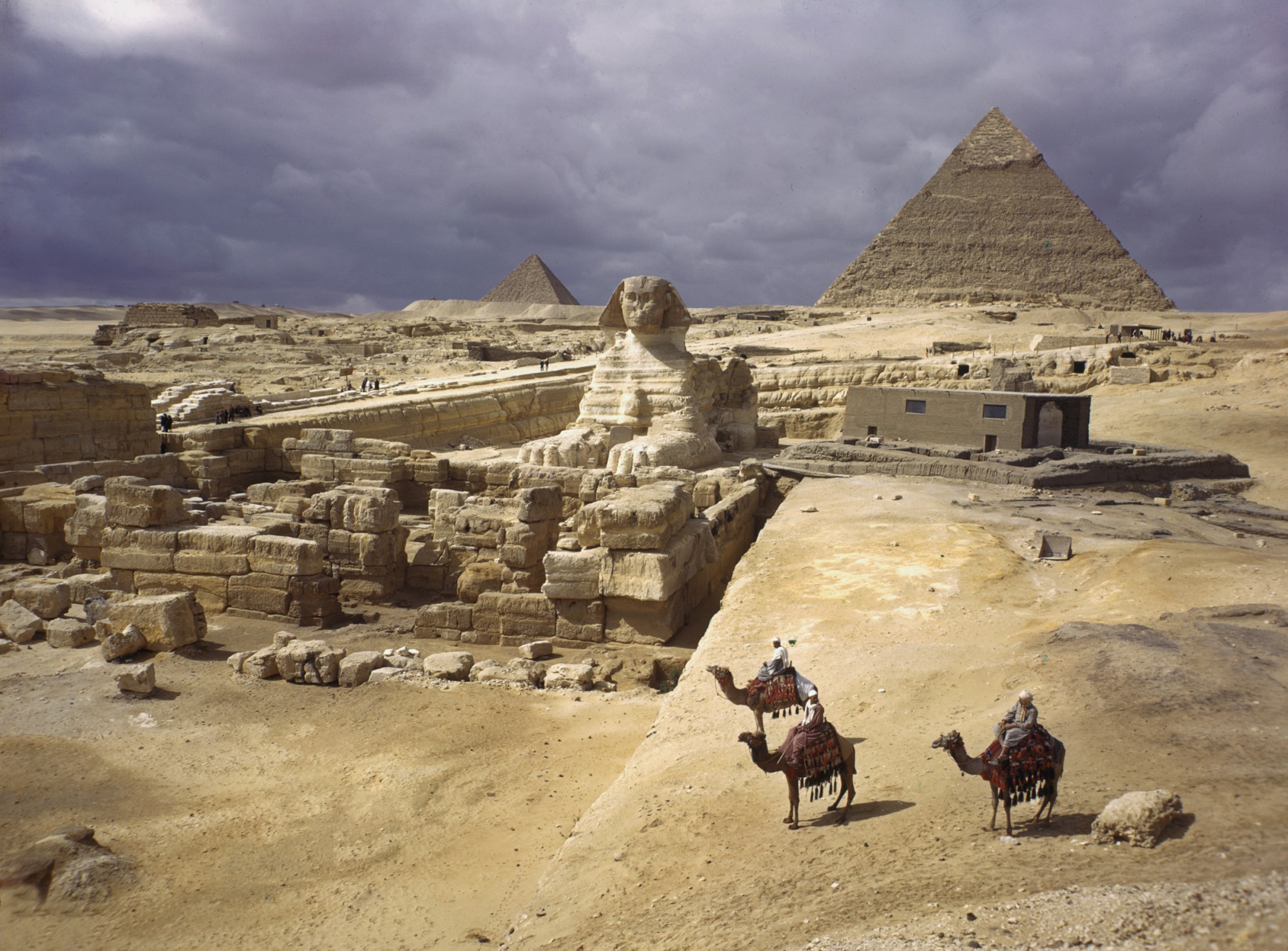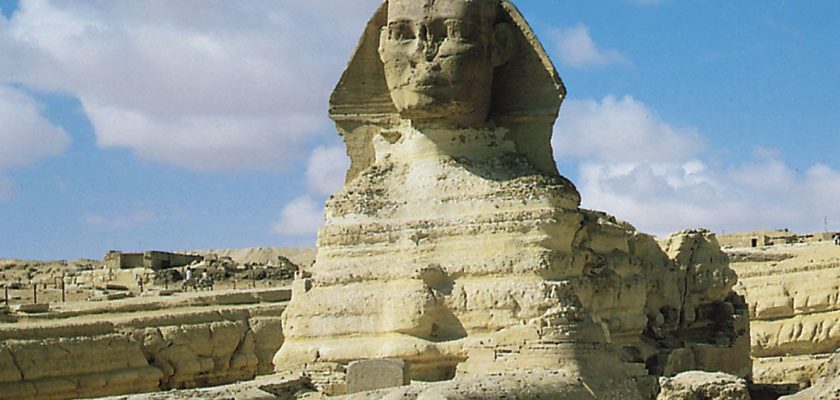Situated on the Giza Plateau, on the west bank of the River Nile, is the mysterious Great Sphinx. Carved out of a large block of limestone, the impressive monumental sculpture measures seventy-three meters long and twenty meters high. It is one of the largest and oldest monuments globally, and even today continues to fascinate Egyptologists and visitors with the mysteries it still hides.
What was the Sphinx originally called?
The name Sphinx came into use during classical antiquity, but it is still impossible to know what it was called when it was built since it is not mentioned in any inscription from the Old Kingdom. What we do know is that in the New Kingdom, it was called Hor-em- akhet, meaning Horus of the horizon. In addition, the Greek sphinx was a mythological beast with the body of a lion, the head of a woman, and the wings of an eagle, despite how the Egyptian sphinxes lack wings and have a male head.
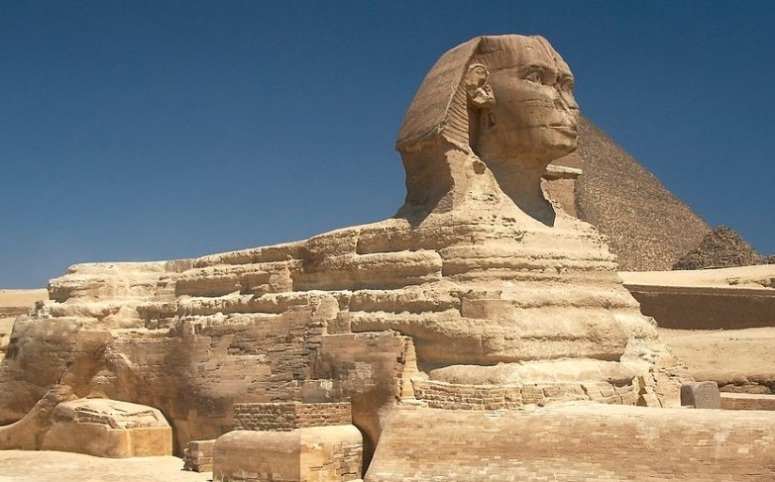
The removable beard
For centuries, the Sphinx wore a long beard that ended up falling off at some point in its history.
The French archaeologist Vassil Dobrev affirms that the beard was not carved with the original sculpture, since when it came off, it did not damage the chin. Thus, the false beard would be added later, surely during the restoration project of Thutmose IV, in the fourteenth century BC (back when the hipster trend of growing a beard started). The remains of the beard of the Great Sphinx are currently preserved in the British Museum.
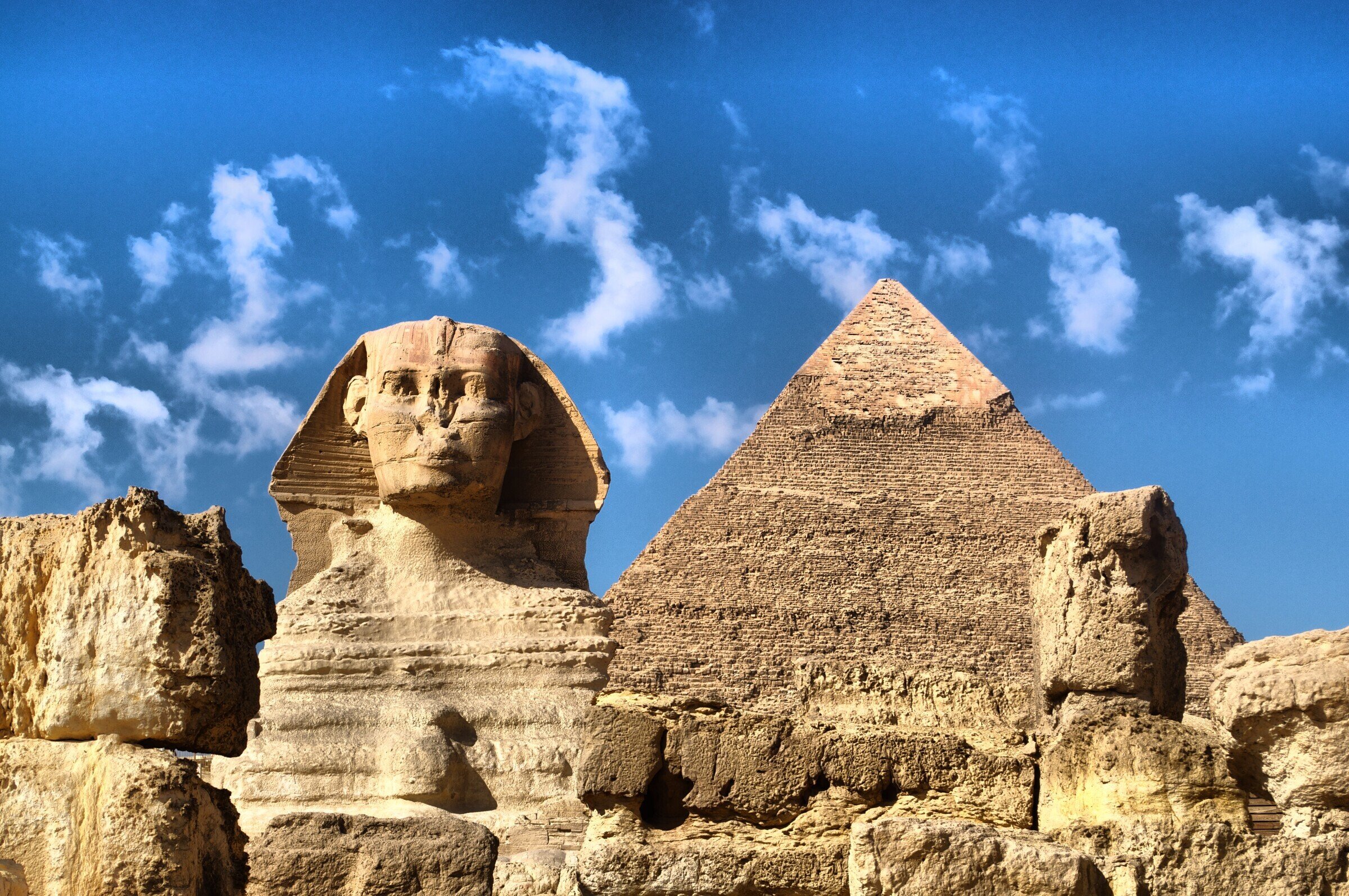
Centuries sleeping under the sand
During its life of thousands of years, the Great Sphinx has been a victim of the desert sands. The first known restoration of the Sphinx occurred thanks to Thutmose IV when it lay almost completely buried under the sands. Subsequent centuries almost completely buried the monument again, until in the 1920s when it was completely excavated.
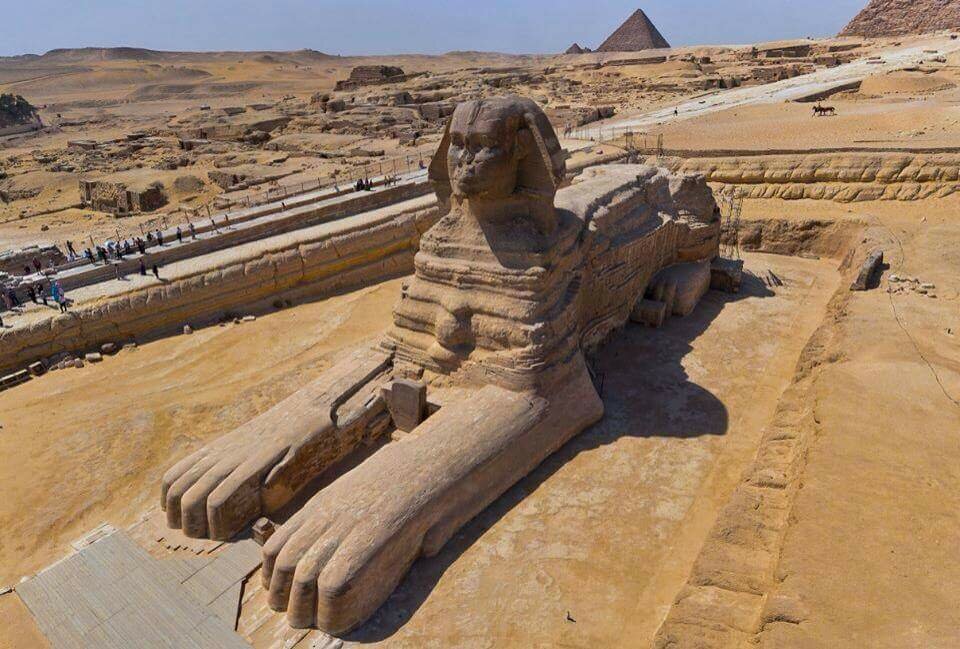
When was the Sphinx built?
Although there is still controversy today regarding the exact date of construction, it is generally accepted that it was built around 2500 BC by Pharaoh Khafre, the builder of the second pyramid of Giza. However, there are others researchers, let’s say unorthodox, who trace the date of construction to around twelve thousand years ago – the middle of the Age of the Ice.
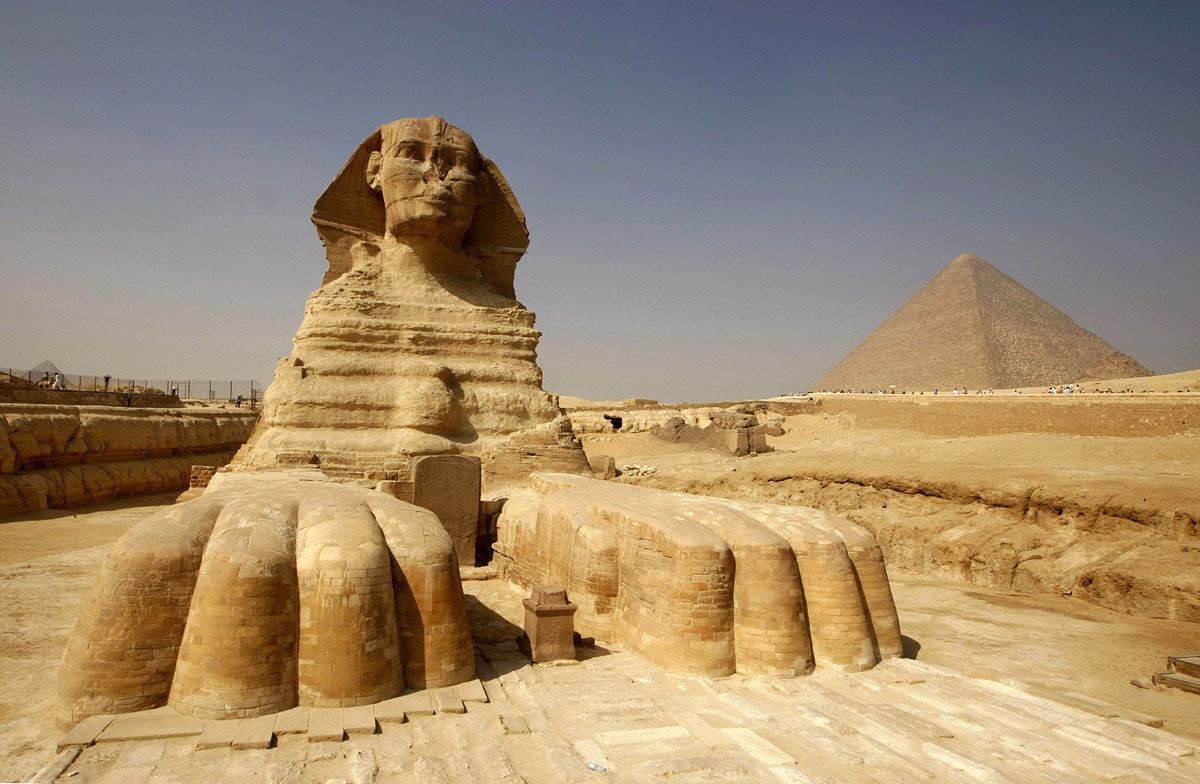
The tail of the Sphinx
Perhaps it is obvious that having the body of a lion, the Great Sphinx has a tail (I was going to put a tail, but I have discarded it to avoid jokes in bad taste), but when I saw it live for the first time, I was surprised that the end of the gigantic sculpture has a large coiled tail.
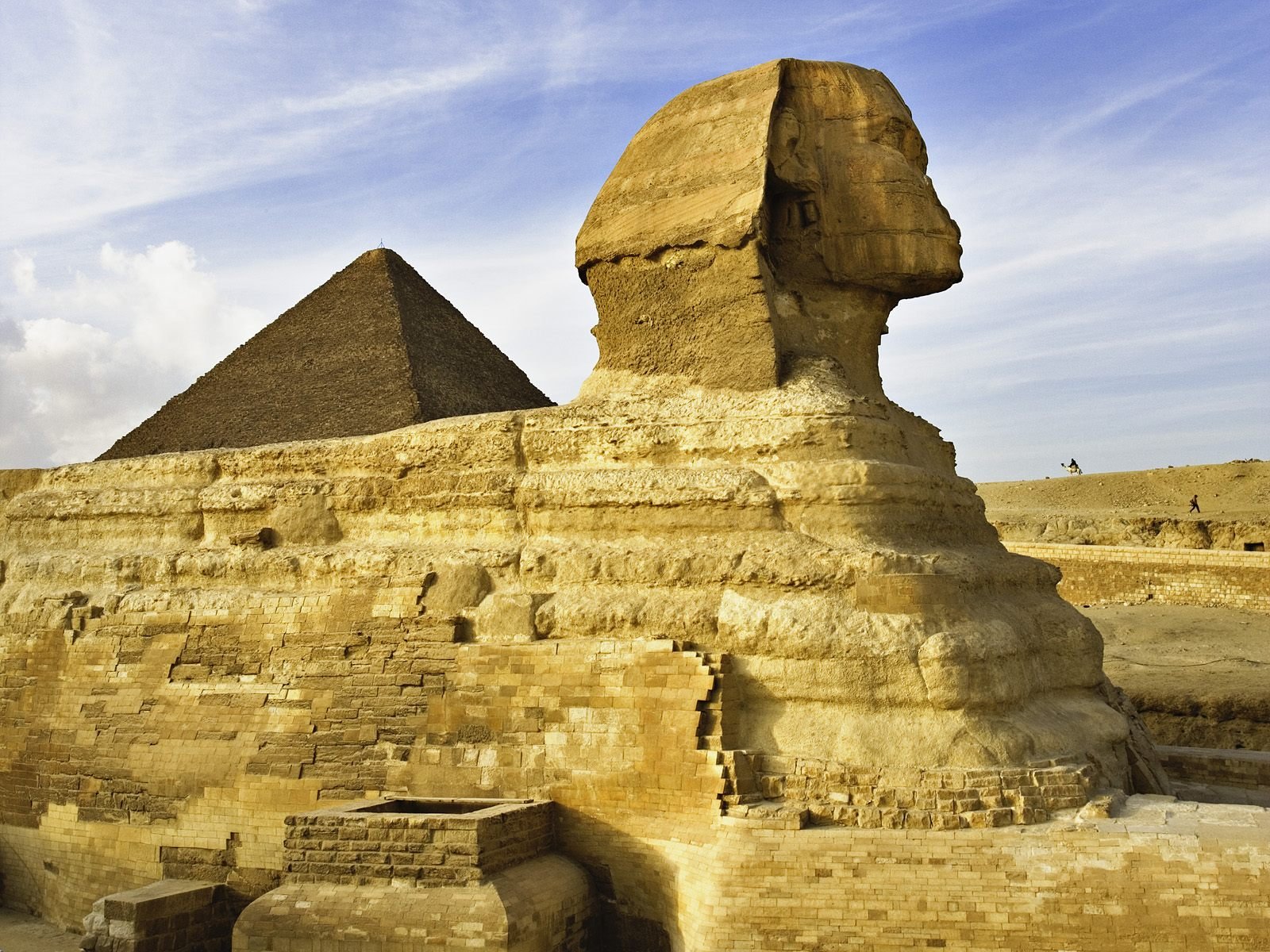
The workers who built the Sphinx ate like kings
Although we have the traditional image that the workers who built the pyramids were slaves who worked at the rhythm of the whip, the excavations led by the Egyptologist Mark Lehner have revealed that the workers were well fed and received top-quality meat from cows, sheep, and goats.
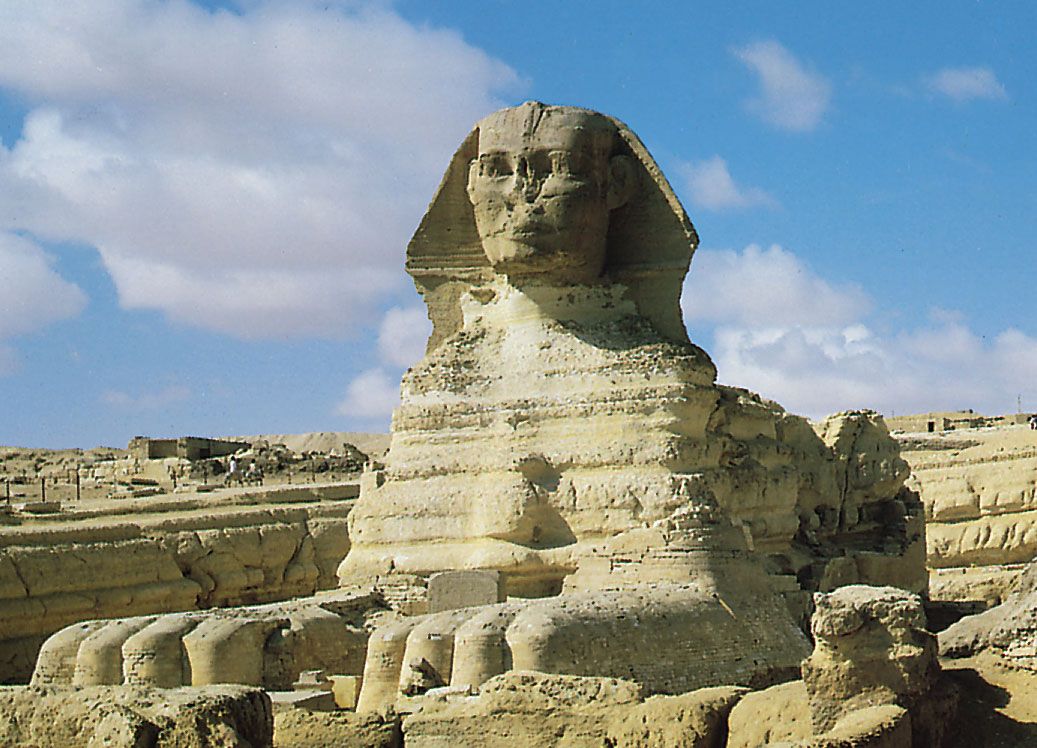
A million sunrises
The Great Sphinx is oriented from west to east, so if we consider that it is estimated to be at least four thousand five hundred years old, the Great Sphinx has seen more than a million sunrises throughout its long life.
